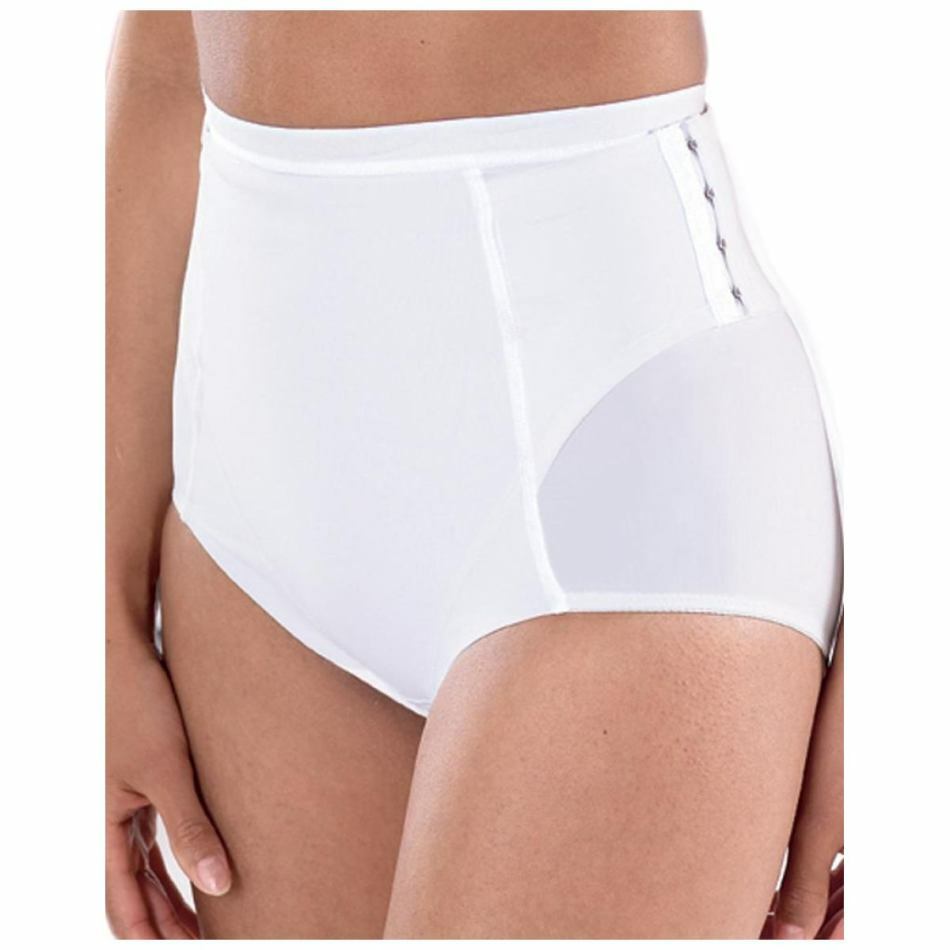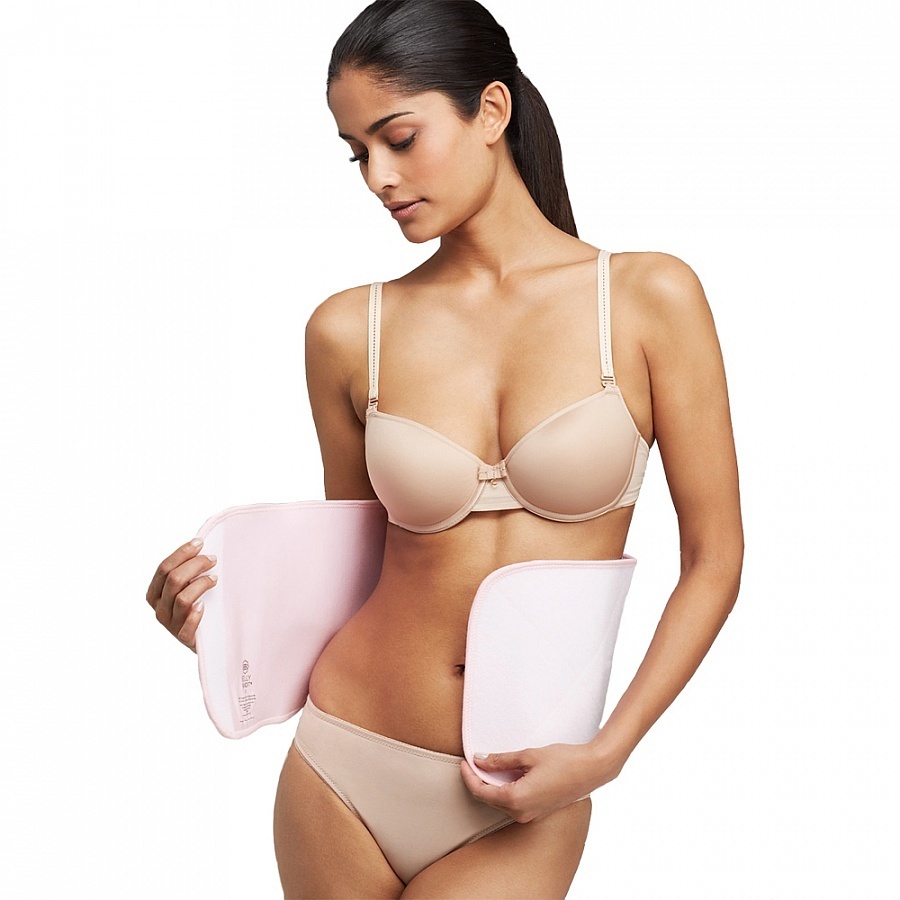Pregnancy is a significant period in the life of any representative of the fair sex. After the end of this period, the woman not only faces many questions regarding the treatment of the baby, but also begins to think about restoring her body.
Contents
- Why do I need a postpartum bandage?
- How to choose the right size for a postnatal bandage?
- Types of postnatal bandages
- What kind of postnatal bandage should I choose?
- How to wear a post-partum bandage?
- How to wear a postnatal bandage?
- How to wear a post-partum bandage?
- When can I wear a postnatal bandage?
- How to wear a postnatal bandage after a cesarean?
- Video: Postpartum bandage
- Upon returning home from the hospital, the happy mother begins to think about how to restore her body to previous forms or even improve them. Each time you look in the mirror, the sagging belly constantly reminds you of the need to take the
- measures. Regardless of whether you had a cesarean section or natural delivery, it will take a long time before you can exercise
- For the first time after birth, the post-partum bandage, which not only contribute to tightening the weakened muscles, but will also help your body recover faster
What is a post-partum bandage used for?
- Each delivery is strictly individual. They differ in duration and complexity, can proceed naturally or end with caesarean section, with ruptures or without any complications.
- The need to wear a postpartum bandage is considered for each case separately. Even among the medical staff there is a lot of discussion about the harm and benefits of using it
- First of all, a properly selected bandage helps reduce the burden on the abdominal muscles and back, reduces pain from uterine contractions and prevents the stomach from hanging after the birth of
. Even after discharge from the hospitalwill help ease the burden, because a woman has a lot of business around the house.
Despite all the disagreements, there are a number of basic indications for wearing a bandage:
- Caesarean section
- Problems with the spine: curvature, scoliosis, etc.
- Severe pain
Contraindications:
- Internal or external sutures on the perineum - the bandage interferes with blood circulation, which can negativelyaffect their healing, besides, the likelihood of an inflammatory process of
- is not excluded. Kidney or digestive tract diseases
Important: To make it easier to return the figure after childbirth, it is recommendedosit prenatal bandage, starting from 20-22 weeks of pregnancy.
 Postpartum bandage
Postpartum bandage How to choose the right size of a postnatal bandage?
- The correct size of the postpartum bandage plays a crucial role. It depends on how effective the bandage will be, and the degree of comfort while wearing the
- . If you gained 12kg or less during pregnancy, then it is worth buying a bandage that matches the size of the clothes before pregnancy. If the weight gain is more than 12 kg, it is preferable to purchase a bandage 1-2 sizes larger than it was before pregnancy in order to avoid unnecessary tugging of the
- . If after several days you feel not very comfortable in the bandage, most likely its size was chosen incorrectly
Important: The sizes of the bandage from different manufacturers may vary. Measure the waist and hips and see the correspondence in the dimension table on the bandage packaging.
 Dimensional table of postnatal bandages FEST
Dimensional table of postnatal bandages FEST Types of postnatal bandages
- The universal is practical because it is suitable for wearing before and after childbirth. Has a wide part, which is located on the back during pregnancy, and after birth - on the stomach
 Bandage universal
Bandage universal - Panties - easy to use, have a wide belt with a pull-on insert on the stomach. However, it is difficult to visit the toilet, so it is recommended to choose a model with a clasp at the bottom, like a body. The size of this bandage should be one more than you wear. Keep in mind that the panty bandage needs to be washed every day.
 Postpartum shoe-panties
Postpartum shoe-panties - Bermudas - look like cowards, only have a long length, they can reach the knees. It pulls not only the stomach, but also the region of the thighs and buttocks. This band is easy to wear thanks to the side closure( zipper or hooks)
 Postpartum Bermuda Bandage
Postpartum Bermuda Bandage - skirt - covers the top half of the hips and waist, is put on top of the underwear. It fixes the abdomen well, is easy to handle. The disadvantage of this bandage is that when it moves, it can rise to the stomach
 Postpartum skirt-skirt
Postpartum skirt-skirt Which post-natal bandage to choose?
- When choosing a bandage, the size primarily plays a role. Incorrectly selected bandage can bring discomfort and not perform its functions. The bandage should not strongly overtighten the body or, conversely, freely hang
- Correctly selected bandage practically does not cause you any inconvenience. It does not stick out from under the clothes, Velcro does not bring discomfort to
- . It is more preferable to purchase a bandage from materials that allow the skin to breathe and absorb moisture( for example, microfiber or Lycra)
- Pay attention to the fasteners. They should allow you to adjust the compression ratio, be it hooks or Velcro. In addition, consider that inconveniently located fasteners can cling to clothes or rub the skin
- All kinds of bandages have both pluses and minuses. Ideally, you can choose the model that suits your physician, but with the size and material you will be able to determine yourself
Important: Buy a bandage in specialized stores or pharmacies, where you will be able to correctly choose the model and size of the postpartum bandage, perhaps you can even try on it. Avoid buying with hands or online stores.
 Multi-level fasteners on the bandage
Multi-level fasteners on the bandage How to wear a post-partum bandage?
It is recommended to wear the bandage only when lying down, when the muscles are as relaxed as possible.
Important: Do not stand up sharply after putting on the bandage to avoid pressure differences that can lead to fainting.
 How to wear a postnatal bandage
How to wear a postnatal bandage How to wear a post-partum bandage?
To wear a bandage under the clothes or on top, whether to wear it on underwear - it all depends on the type of bandage you choose. For example, a skirt bandage is inconvenient to wear with trousers, and with bermudas the length of the skirt or dress is limited by the length of the bandage.
How to wear a postnatal bandage?
- The wearing time is determined individually in each case. The complexity of the delivery is taken into account, the intensity with which the uterus is reduced, the elasticity of the skin
- Regardless of whether you wear a bandage right after delivery or the next day, it should be worn no more than 10 hours a day, and take breaks every 3 hours. The optimal option for the night to remove the bandage, because at night the muscles are relaxed and there is no strong strain on the back
- It is recommended to wear the bandage on average for 4-6 weeks. After this period, its use becomes useless, because the uterus comes into tonus, and the skin contracts
 How to wear a post-partum bandage
How to wear a post-partum bandage When can I wear a postnatal bandage?
In the absence of contraindications for wearing a bandage, it is recommended to wear it on the day of birth, at the latest, the next day. It depends on when a new mother is allowed to get up.
Do not show excessive zeal, wait for postnatal examination and consult a doctor about wearing a bandage. So you can ask your questions if there are testimonies or find out the reason for the ban.
How to wear a postnatal bandage after a cesarean?
There are a number of reasons why it is necessary to wear a bandage after a cesarean section:
- Milk comes much later. This affects the rate of contraction of the uterus
- The seam needs to be protected from mechanical influences and physical exertion.
- Muscles are deprived of tonus
- . In the postoperative period there are strong painful sensations preventing full-fledged care of newborns.
- Physical activities and sports are contraindicated for a long time - from 4 to 6months
The rules for wearing a bandage are the same as for normal births, but not all models are suitable after cesarean section. Give preference to models that fix the stomach well and protect the seam. You can purchase a special postoperative bandage or bandage panties.
Be sure to wear a bandage when you are working around the house or carrying a baby in your arms. Do not forget to take it off from time to time, to give a suture breathe, and the muscles to work on their own.
After 1-1.5 months, when the bandage becomes unnecessary, it is not recommended to stop using it sharply, otherwise there will be pain in the muscles. Drain your body from outside help, gradually reducing the time spent in the bandage.
